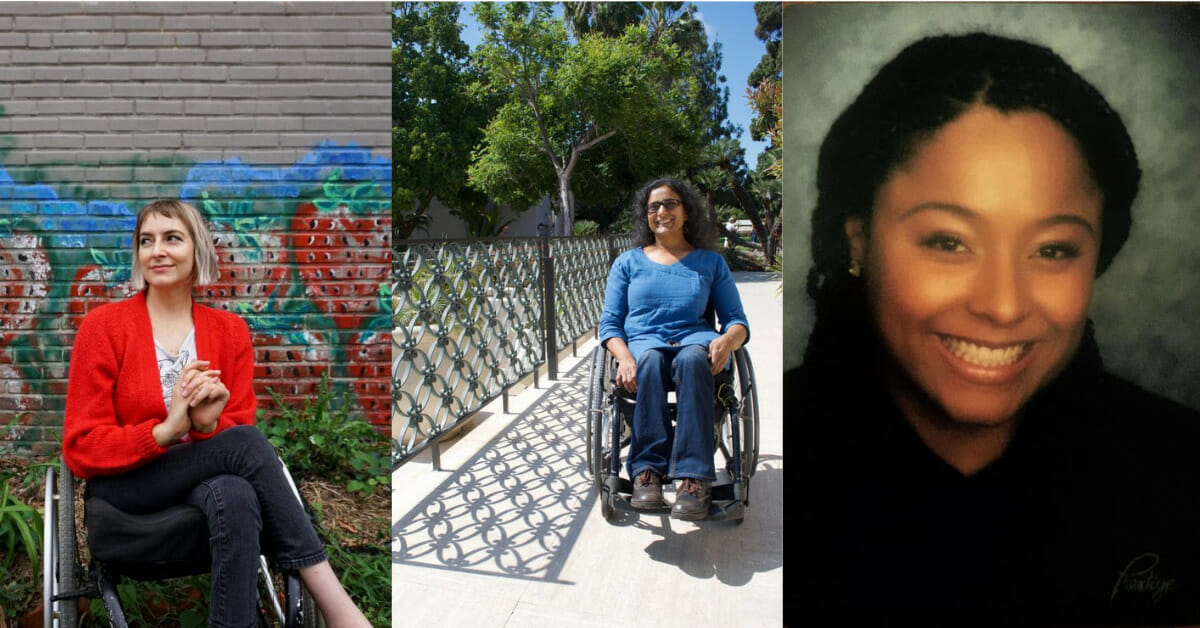COVID-19, Virtual Care
Virtual care during COVID-19: three Americans discuss the use of technology to deliver health care

Three women from different backgrounds share their experiences with virtual health care in this first post of our virtual care blog series, Virtual Care: From A People’s Perspective.
As we think about the future of virtual care, in order for it to be an effective, lasting, equitable tool for getting people the care they need, it’s important to understand and address the concerns and barriers that people experience using virtual care. Throughout our listening work we are recognizing the important considerations and needs people share across demographics using virtual care. In this post, we highlight virtual care considerations from a few members of our Voices of Real Life, a group guiding our work by sharing their expertise on the needs of their communities.
With restrictions placed on in-person health care visits as a result of the COVID-19 pandemic, the use of virtual health care has been on the rise. Americans across the country are accessing health care services through the use of technology, such as video conferencing and internet-connected health devices. To learn more about how people are experiencing virtual care, United States of Care convened three women from Voices of Real Life for a discussion where themes on convenience, comfort and privacy, insurance, and virtual community care all emerged.
Over the years, we have become accustomed to the logistics of doctors appointments. After we schedule an appointment, we have to secure transportation, travel to the appointment, check-in when we arrive and sit in a waiting room, all before we are actually seen by a doctor. The increased use of virtual care has highlighted the benefit of eliminating a lot of these steps and simply getting to the appointment. The convenience of the telehealth experience became clear early into our discussion. Rebekah Taussig, a disabled writer, teacher in Kansas City, and new mother reported that using telehealth services during the pandemic has made her life with her young child much simpler and has also eliminated her anxiety of physically going into the office. Rebekah says, “I am not having to sit for an hour and a half in the waiting room and pack everything up to get in my car… and it doesn’t feel like I am missing anything with my doctors.” The group echoed the benefits of convenience in not having to leave their homes.
While virtual care has helped many save time and energy, concerns remain around the privacy and comfortability of attending an appointment virtually. In-person visits secure a private, quiet space and help create a comfortable patient experience. One of the participants, Bhavna Mehta, a visual artist and immigrant from India, shared that while her experience using video conferencing was ok overall, it became a little awkward when her physician needed to do a physical examination. Positioning her camera for her doctor to be able to examine part of her body was not as comfortable as her past experiences with in-person health care visits.
In addition, barriers remain in accessing virtual health care at all. Someone’s access to virtual care is not necessarily the same as their access to in-person care. Rebekah Azaylia Alexander, who recently took on a new job opportunity, expressed concern over her access to virtual care. Rebekah is a millennial, latina/afro-caribbean woman who is a caregiver for her grandmother. She explained that her former employer provided an organizational sponsored HMO whose size and resources offered a breadth of coordinated services, easily accessible full medical health records and ease of attending virtual care appointments. Since her change between employers, Rebekah’s access to the same caliber of digital services for coordinated healthcare has dramatically diminished, an alarming finding as this transition came for her at the height of the COVID-19 pandemic – a period where the demand for robust remote healthcare services have reached an all time high presenting a clear need for our models of healthcare delivery to evolve with the times.
As the conversation concluded and the group began to reflect on what was said, they expressed the idea of using virtual care as a way for communities to care for one another. Rebekah Taussig spoke about being able to access support and engage in conversations with Bhavna, even though they live on opposite sides of the country. Rebekah went on, “Disabled bodies… have needs that the medical world doesn’t seem very interested in or up to speed in some instances.” She went on to tell Bhavna, “You’ve even helped me think through pressure sores and different cushions… in a way my doctors haven’t even talked with me about.” Through our conversation the group wondered out loud if there could be a world where this type of connection and community care through technology was possible, and expressed interest in a space where they could lean on this virtual community care more often.
United States of Care is listening to real people across the country and across demographics to understand their personal experiences with virtual care. What they like about it, how it may improve their access to care, and what barriers and challenges they face. After extensive listening to people and communities we will use their voices along with other quantitative and qualitative research to develop principles that will build a virtual care system that works equitably for everyone. We will also take our readers along with us through this virtual care journey in this blog series. Learn more about our work in the virtual health care space.